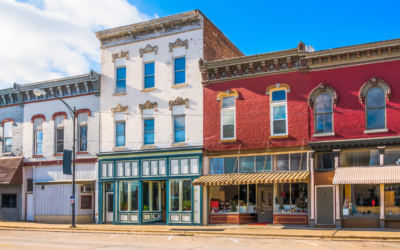The last few years have been good to commercial real estate, and steady upward trends in several areas are expected to continue for 2016. Here are 5 conditions that we expect to see more of in the coming year.
#1: Appetite for Risk
Secondary markets in particular have seen a boost in the willingness of investors to accept more risk for higher returns. There is reason to believe that this will continue to be the case for 2016. Markets to watch are places like Philadelphia, Charlotte, Austin, and Denver, where Class A properties have attracted considerable interest.
#2: Steady Industrial Sector
Demand for industrial space has been growing, especially in the gateway markets. As the economic recovery continues, consumer spending is improving on items like furniture and electronics especially. The demand for warehouse space has been heaviest in primary markets, but is also detectable in places like Sacramento and Charlotte.
#3: Investment Follows Jobs
Commercial real estate investors are looking beyond primary markets and investing in cities with strong job growth. This trend will continue in the coming year, with investors attracted to places connected to hot industries, including technology, energy, and banking. Houston, San Francisco, Seattle, and Austin are some markets that will continue to see active CRE investment.
#4: Low Supply
Rents will continue their steady increase as supply in most sectors fails to meet the demand, according to recent reports. Office vacancy rates are forecast to slightly decline from 15.6 percent in the second quarter to 15.5 percent in the second quarter of 2016. Office rents are projected to increase 3.4 percent this year and 3.7 percent in 2016.
Industrial vacancy rates are expected to fall from 8.4 percent in the second quarter to 8.1 percent in the second quarter of 2016. Annual industrial rents should rise at a clip of 3.1 percent both this year and in 2016.
Vacancy rates in the retail market are expected to decline from 9.6 percent currently to 9.2 percent in the second quarter of 2016. Average retail rents are forecast to rise 2.6 percent this year and 3.1 percent in 2016.
One exception here may be the apartment rental market, which will likely see a rise in vacancies from 4.3 percent currently to 4.4 percent in the second quarter of 2016. Rent growth here will slow slightly, down to 3.3% for 2016. This could indicate a slow in the multifamily sector on the horizon.
#5: Increased Allocations and Capital Flows
As institutions and high net-worth investors reallocate their investments, they’ll be influenced by the strong performance in commercial real estate to look at real estate more closely. We expect these entities to raise their allocation targets with regard to CRE. It’s already being calledthe “4th Asset Class” on a par with stocks, bonds, and cash. International institutional investors have increased their allocation to real estate steadily over the last few decades, from a rate of 2.1% in 1980 to 9.6% in 2015. The rate of foreign investment in U.S. real estate should see continued growth in in 2016 as well.
Taken together, these trends represent a tremendous amount of growth and opportunity for the coming year, as economic recovery fuels job growth and investor optimism.



